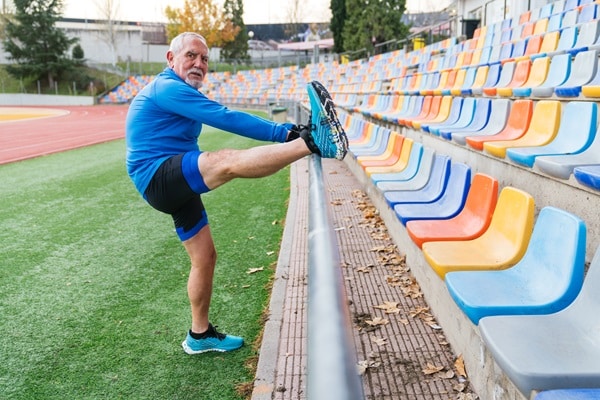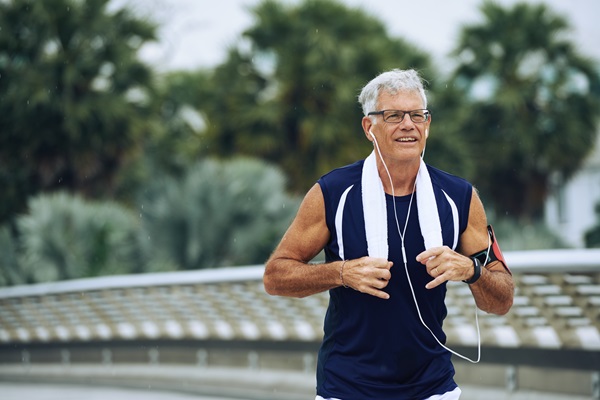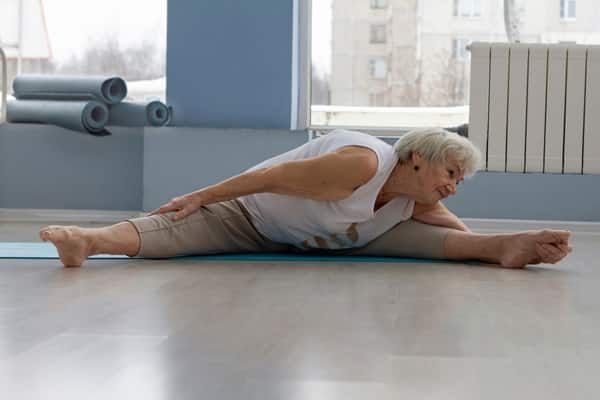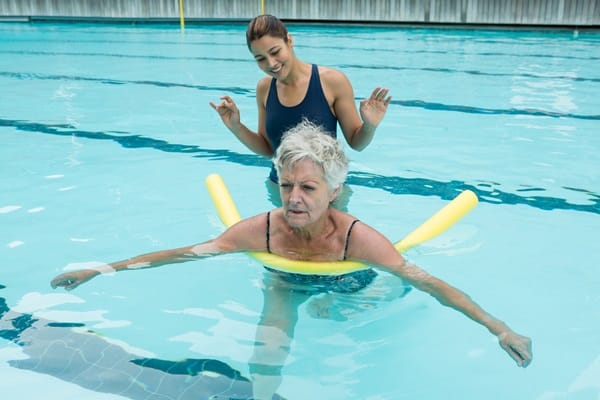Maintaining an active lifestyle becomes increasingly important as we age, offering significant benefits for seniors, including enhanced mobility, improved balance, and a lower risk of chronic diseases. Tailored workout routines for seniors contribute to physical health and mental well-being, helping combat loneliness, depression, and cognitive decline. With the right approach, exercise can be safe, enjoyable, and immensely beneficial, regardless of starting point. This article explores the best workout routines designed specifically for seniors, focusing on exercises that are both effective and gentle on the body.
Contents
Understanding the Needs of Seniors

When crafting workout routines for seniors, it’s crucial to consider their physical and mental health needs. Many seniors face challenges such as decreased bone density, joint pain, reduced muscle mass, and a heightened risk of falls. These factors necessitate a careful approach to exercise that strengthens the body without overtaxing vulnerable areas. Additionally, the mental health benefits of exercise, including its ability to fend off depression and cognitive decline, cannot be overstated. A well-rounded routine incorporating strength, flexibility, balance, and cardiovascular health can address these needs holistically, offering a pathway to improved well-being and a higher quality of life.
Creating an effective workout plan for seniors involves more than adjusting the intensity of exercises; it requires a deep understanding of the aging body’s physiology and its response to physical activity. Safety is paramount, focusing on low-impact exercises that minimize the risk of injury while maximizing health benefits. Incorporating exercises that improve balance can significantly reduce the risk of falls, a common concern among the elderly. Similarly, activities that enhance flexibility and joint health can help maintain mobility and independence. By prioritizing these elements, workout routines can be tailored to meet the unique needs of seniors, making exercise not just accessible but also a pleasurable and rewarding part of their daily lives.
The Role of Warm-ups and Cool-downs

Warm-ups are critical in preparing the senior body for exercise, gradually increasing heart rate and muscle blood flow and reducing the risk of injury. For seniors, a warm-up might include gentle stretching, walking, or light aerobic activity, setting the stage for a safer and more effective workout. These initial steps are crucial for priming the body, making the subsequent exercise safer and more beneficial. Skipping warm-ups can lead to discomfort and a higher likelihood of strain, negating the positive impacts of physical activity.
Cool-downs are equally important, allowing the body to gradually return to its resting state. Just as a gentle introduction to exercise prepares the body and mind for activity, a proper cool-down, including stretching and relaxation exercises, helps to prevent muscle soreness and stiffness. For seniors, this means incorporating flexibility exercises that enhance muscle elasticity and promote circulation. A well-executed cool-down not only aids in recovery but also ensures that the benefits of the workout extend beyond the immediate post-exercise period, contributing to long-term health and well-being.
Strength Training for Seniors

Strength training is an essential component of a senior fitness regimen aimed at combating the natural loss of muscle mass and strength that comes with aging. Engaging in regular strength-building exercises helps maintain and even rebuild muscle strength, supports joint health, and can significantly improve balance, thereby reducing the risk of falls. For seniors, focusing on low-impact, resistance-based activities, such as using light weights, resistance bands, or even body-weight exercises, can provide these benefits without undue stress on the body. The key is to start slowly, focusing on form and gradually increasing intensity to avoid injury.
Moreover, strength training has been shown to have metabolic benefits, helping manage weight and control blood sugar levels, which is particularly important for seniors potentially dealing with chronic conditions like diabetes. It’s also beneficial for bone health, as it helps combat osteoporosis by strengthening muscles and bones. Sessions can be tailored to individual fitness levels and mobility, ensuring that even those with limited capability can participate. Activities such as chair exercises or wall push-ups are excellent starting points, allowing for strength training that is accessible, safe, and effective for improving seniors’ quality of life.
Cardiovascular Exercises for Heart Health

Cardiovascular health is critical for seniors, as heart health challenges increase with age. Regular cardio exercises help maintain a healthy heart, improve circulation, and increase lung capacity, contributing to overall endurance and well-being. For seniors, choosing low-impact cardio exercises that minimize strain on the joints while still providing a heart-pumping workout is important. Walking, swimming, and cycling are excellent options, offering the flexibility to adjust intensity and duration to match individual fitness levels. Additionally, these activities can be enjoyable, encouraging regular participation, which is key to reaping the cardiovascular benefits.
Incorporating routine cardiovascular exercises into a senior’s workout plan supports physical health and enhances mental health by boosting mood and reducing the risk of depression. The key is consistency and finding enjoyable activities that can be done safely, such as dancing, aqua aerobics, or even gentle group fitness classes designed for seniors. Ensuring exercises are performed at a moderate intensity, where the conversation is still possible, can help manage exertion levels and maintain engagement without overtaxing the body. When combined with other forms of exercise, regular cardiovascular activity creates a holistic approach to senior fitness, promoting a healthier, more active lifestyle.
Flexibility and Balance Workouts

Flexibility exercises are vital for seniors, helping to maintain the range of motion in joints, reducing the risk of injuries, and decreasing pain associated with conditions like arthritis. Stretching routines or yoga can significantly improve flexibility, making daily activities easier and more comfortable. These exercises enhance physical balance, which is crucial for preventing falls, a major concern for the elderly. By incorporating a mix of static and dynamic stretches, seniors can work on flexibility and balance simultaneously, fostering greater mobility and independence.
Balance workouts, such as Tai Chi or simple balance exercises like standing on one foot or walking heel to toe, are particularly beneficial for seniors. These activities strengthen the muscles that help keep you upright, including your legs and core, improving posture and coordination. Regular practice of balance exercises reduces the likelihood of falls by enhancing one’s ability to control and stabilize one’s body’s position. When these workouts are performed consistently, they can significantly impact a senior’s ability to perform everyday tasks, contributing to a higher quality of life and prolonged independence.
Aquatic Exercises for Seniors

Aquatic exercises provide a unique and effective workout medium for seniors, offering the benefits of resistance training with the added advantage of buoyancy, which reduces stress on joints and muscles. Water aerobics, swimming, and even walking in water can significantly improve cardiovascular health, muscle strength, and flexibility, all while minimizing the risk of injury. The water resistance makes these exercises more effective at building strength, yet its supportive environment helps prevent falls and strains.
Moreover, aquatic exercises are therapeutic, helping to manage pain and improve mental health. The soothing nature of water can be relaxing and meditative, providing a sense of well-being and reducing symptoms of anxiety and depression. These exercises can also be social, allowing seniors to engage with their peers in a fun and supportive setting. Whether through organized classes or independent activities, aquatic exercises can be crucial in a senior’s fitness routine, promoting physical and mental health.
The Bottom Line
Embarking on a fitness journey can significantly enhance the quality of life for seniors, offering benefits that extend well beyond physical health. Seniors can improve their strength, flexibility, balance, and mental well-being by carefully selecting activities that cater to their unique needs and preferences. Whether through individual exercises, group classes, or outdoor activities, the key is to find enjoyable routines that promote consistency and long-term engagement. With the right approach and support, seniors can experience the transformative power of fitness, enjoying greater independence and vitality in their golden years.